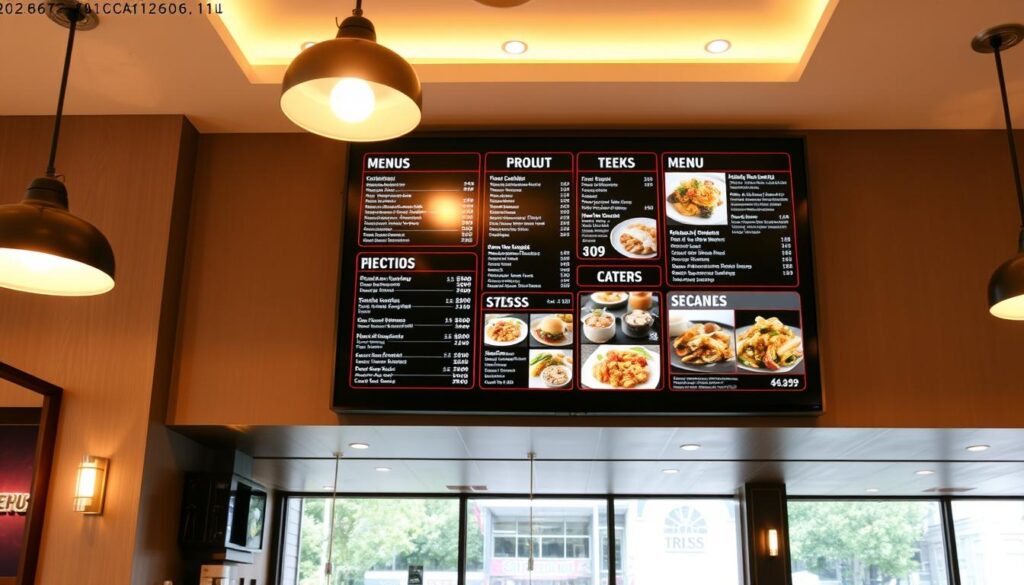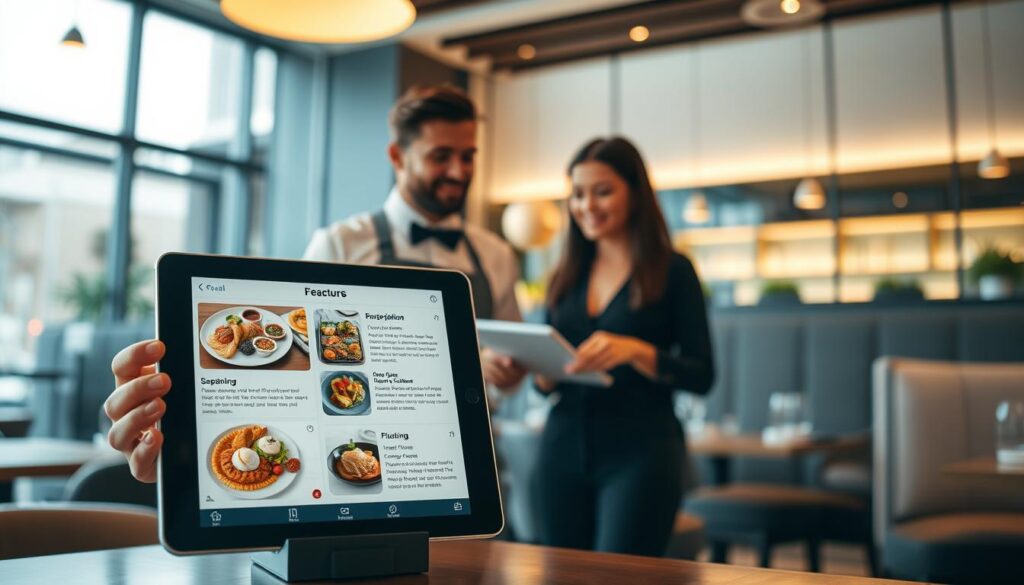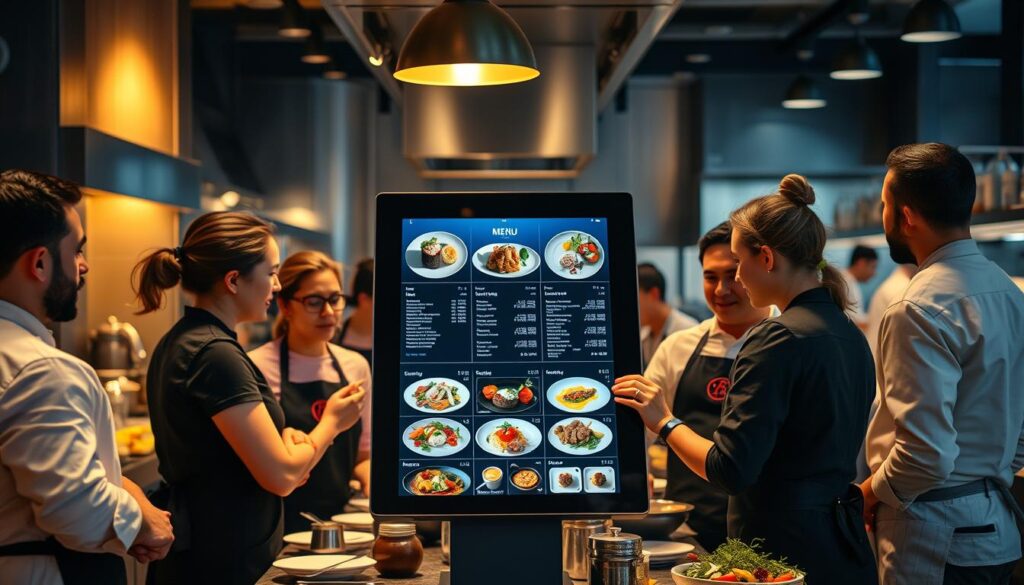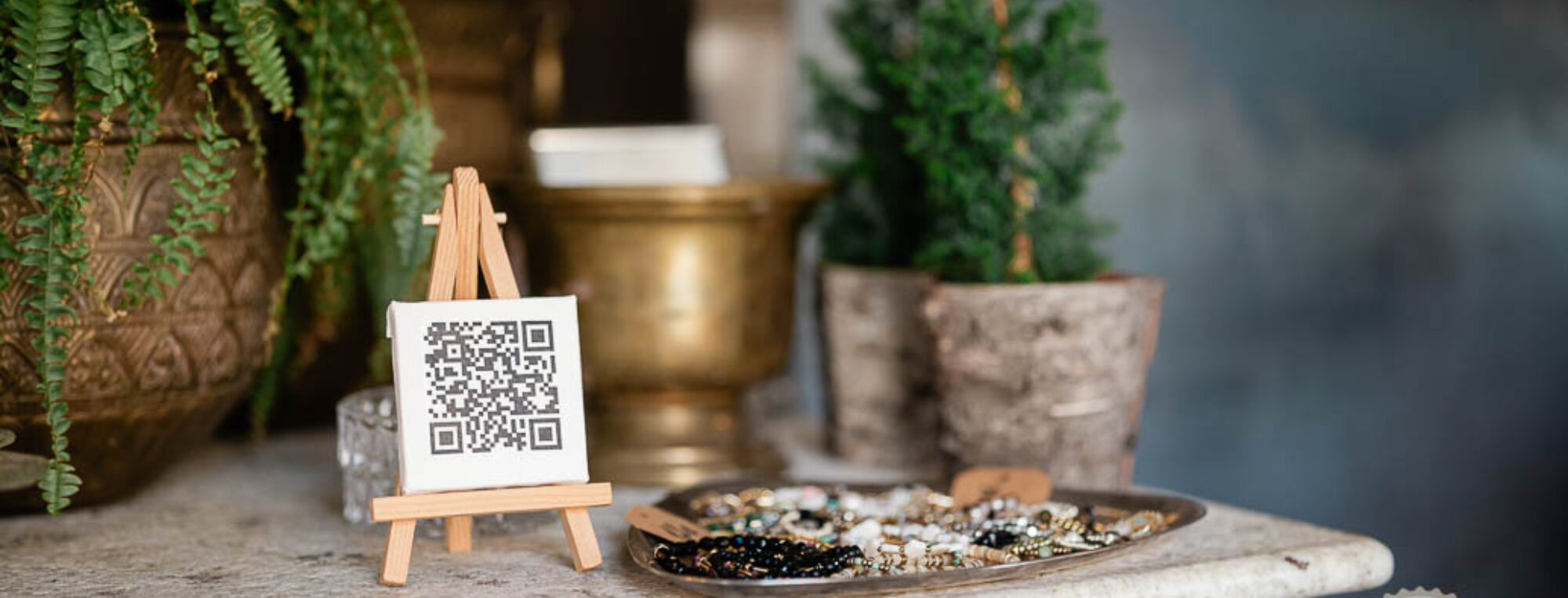Is your restaurant’s menu holding you back from growth? Traditional paper menus cost money to print and waste resources. They also don’t meet today’s tech-savvy diners’ expectations. Imagine cutting costs, boosting orders, and standing out in a crowded market—could a digital menu make that possible?

Join Jane, a busy restaurant owner, as she transforms her business with a restaurant digital menu. This guide reveals how outdated menus hurt profits and why tools like PikMenu are reshaping dining experiences. Discover how to modernize your menu, reduce waste, and attract more customers—all while testing the solution risk-free with a free trial.
Key Takeaways
- Traditional menus cost time and money to maintain.
- Digital menus improve customer satisfaction and order accuracy.
- Jane’s story shows how a 1-week switch to a digital menu boosted her sales.
- PikMenu’s features go beyond QR codes to enhance profitability.
- A free trial lets you test the system without upfront investment.
The Modern Restaurant Challenge: Why Traditional Menus Fall Short
Restaurants are under a lot of pressure to change. Costs are going up, and what customers want is shifting. Paper menus are becoming old-fashioned. Jane, like many owners, saw her old system was not only a hassle but also hurting her business.
Rising Costs of Printing Physical Menus
Printing menus can get expensive quickly. Restaurants spend a lot on paper, ink, and labor to keep menus up to date. A 20-page menu printed every three months can cost over $400 a year. Plus, there are extra fees when prices or dishes change. Digital menu platforms get rid of these costs, allowing owners to update items instantly.
Customer Expectations in the Digital Age
“Today’s diners expect menus that are as interactive as their smartphones.”
Customers now want quick access to menu options, nutritional info, and ways to customize. A 2023 study showed 68% of people prefer online menu access. Traditional menus can’t compete with the interactive features and search options today’s diners expect.
The Environmental Impact of Paper Menus
A single restaurant can throw away over 2,000 pages of paper menus every year. This waste harms the environment and turns off eco-friendly diners. Switching to a digital menu cuts down paper use by 100%. It meets the growing demand for sustainability.
What Exactly Is a Digital Menu and Why It Matters
A digital menu is a screen-based menu that replaces paper ones. These electronic menus can be simple QR codes or full-featured systems. They let customers view dishes on their devices or restaurant screens.
- QR code menus: Customers scan codes to view menus on personal devices.
- Tablet-based systems: Shared tablets at tables for browsing and ordering.
- Touchscreen kiosks: Self-service stations where diners interact directly.
Behind the scenes, a good virtual menu system includes:
- A backend dashboard for staff to update items, pricing, or promotions.
- Integration with POS systems for real-time order processing.
- Customizable layouts to match your brand’s style.
Myth: „They’re too complicated!“ In reality, many platforms like PikMenu make setup easy. Restaurants see a 50% cut in menu management time. These tools offer features like allergy alerts and upsell prompts, boosting profits.
As one café owner said, „Our digital menu became our 24/7 menu manager.“ Ready to move away from ink stains and outdated prints? Let’s explore how these systems work next.
Meet Jane: A Restaurant Owner’s Journey to Modernization
Jane’s family-run bistro was a beloved spot for years. But, she felt it was time to move forward. She was juggling staff training, paper costs, and customer needs, feeling overwhelmed.https://www.youtube.com/embed/-a3sq9qj1gg
“I didn’t know where to start—with so many options, change felt risky.”
Jane’s Initial Hesitations About New Technology
Her concerns were clear: cost, staff confusion, and customer hesitation were big worries. A quick look at her finances showed a huge expense: $1,200 a year on printed menus. But, fear of tech problems kept her from taking action.
The Breaking Point: When Traditional Methods Weren’t Enough
| Old Process | New Possibility |
|---|---|
| Manual menu updates | Real-time digital updates |
| Lost revenue from outdated pricing | Instant price adjustments |
| Customer complaints about readability | Interactive digital menu navigation |
First Steps Toward Digital Transformation
- Researching restaurant digital menu platforms
- Testing PikMenu’s free trial
- Hosting staff workshops to onboard teams
Quickly, Jane saw her team getting the hang of it. “Seeing how easy it was changed everything,” she says. She wanted something simple, cost-effective, and scalable. PikMenu fit the bill perfectly.
The PikMenu Solution: More Than Just a QR Code Menu
QR code menus make ordering easy, but PikMenu does more. It’s a digital menu software with advanced tools for restaurants.
Key Features That Set PikMenu Apart
PikMenu offers real-time menu updates and supports many languages. Restaurants can quickly change menu items, show allergen warnings, and track sales. “Adjusting prices during peak hours cut waste by 30%,” says Jane, who uses it every day. A qr menu becomes a valuable tool with these features.
“The allergen alerts alone reduced customer complaints by half,” Jane shared, highlighting how PikMenu’s features solve common problems.
Integration Capabilities with Existing Systems
PikMenu works with top POS systems like Square and Toast, and reservation tools like OpenTable. This integration keeps menus up to date with inventory and orders. As a digital menu software, it connects systems, streamlining workflow.
User-Friendly Interface for Both Staff and Customers
- Staff use a drag-and-drop editor to change menu items quickly.
- Customers scan a qr code menu and use touch screens to navigate.
- Staff training took Jane’s team just 30 minutes.
Want to see what makes PikMenu special? Start a free trial at pikmenu.com and discover how it changes your operations.
Before and After: Transforming Customer Experience with Interactive Menus
“The difference was like night and day,” said a regular diner at Jane’s bistro.
Before theinteractive menu, customers had trouble reading menus in dim light. Servers had to write down allergy questions. Guests from other countries found it hard to understand the descriptions.
Now, thedigital menuhas changed everything. Customers just scan a QR code to see menus on their phones. They can zoom in on dishes, see how they’re prepared, and filter for special diets.
A Japanese tourist ordered the shrimp pasta after seeing clear photos and reading it in Japanese. Allergy alerts are just a tap away, making diners with allergies feel safer.
Orders are now 30% faster. Jane’s team makes fewer mistakes, and customers are happier. One diner said, “I now know what I’m eating—no more guessing!”
Today, Jane’s restaurant gets 25% more repeat customers. Theinteractive menu lets guests explore dishes like a virtual tasting. Staff can focus on serving, making the dining experience better.
Implementation Timeline: How Jane Transitioned in Just One Week

Jane’s restaurant digital menu rollout started with a clear plan. In two days, she set up her PikMenu account and customized it. She also mapped QR code locations.
Days 3-5 were for training staff and uploading dishes. By day 7, her digital menu was live, collecting customer insights. Here’s how it happened:
Day 1-2: Setup and Configuration
Jane began by creating her PikMenu profile and adjusting settings. She set up payment integrations and table layouts. Staff placed QR codes at tables and the host stand.
A quick design template matched her branding, ready for content.
Day 3-5: Staff Training and Menu Upload
Teams learned the backend during shifts, adding photos, prices, and allergy info. Jane used PikMenu’s drag-and-drop tool to organize sections. By day 5, the restaurant digital menu was complete, with staff ready to assist diners.
Day 6-7: Soft Launch and Feedback
Select tables tested the system. Jane collected feedback via a quick survey. She adjusted descriptions and visuals based on diner preferences.
Minor tweaks ensured a smooth full launch the next week.
Jane’s experience shows a digital menu can be rolled out quickly. No restaurant downtime meant minimal disruption. This proves modernization doesn’t require weeks of planning.
The Numbers Don’t Lie: Measurable Results After 90 Days
After three months with PikMenu’s digital menu, Jane’s restaurant saw big changes. They cut printing costs by 20% and updated menus 40% faster. Servers spent 15% less time explaining dishes, allowing them to serve guests better.
They also saw financial gains. Average orders went up 30%, and special dishes like truffle pasta sold 25% more. Food waste fell 18% thanks to better ordering data. Customers were happier too, with 12% shorter wait times and 22% more positive online reviews about the electronic menu. Repeat visits increased by 19%.
“The data speaks for itself,” Jane said. “I never expected the system to track digital menuengagement, but now I see which dishes grab attention fastest.”
They found out when people order most and what allergens they worry about. This info helped Jane improve promotions and training. They saved $4,200 on printing and saw a 12% profit margin increase. The return on investment was clear. Modernizing with a digital menu is a smart choice for any business.
Digital Menu Design: Creating Visual Appeal That Drives Sales
Visual storytelling turns menus into sales tools. Jane used digital menu design to make her digital menu board a sales driver. She showed that looks and strategy are key.
“The colors and layout now speak to customers in a way paper never could,” Jane shared, highlighting how design changes reshaped her dining experience.
Color Psychology: The Hidden Persuader
- Warm red tones near appetizers encouraged urgency for specials
- Soft greens boosted appetizer selections by 15% for healthy dishes
- Gold accents around premium items drove 22% more high-margin orders
Where to Place Profit-Boosters
Prime real estate matters. Jane’s team:
- Placed daily specials in top-left menu board corners
- Highlighted combo meals in the first 30% of scrolling zones
- Used bold borders around featured dishes
Thisdigital menu designstrategy lifted average order values by 8% in 30 days.
Images That Sell
| Dish | Previous Orders/Week | Post-Redesign Orders |
|---|---|---|
| Truffle Fries | 24 orders | 42 orders (+75%) |
| Lobster Risotto | 9 orders | 21 orders (+133%) |
Professional photos of these dishes made them stand out on the digital menu board. They turned underperformers into top sellers.
Jane updated layouts weekly with PikMenu’s analytics. Items viewed 50+ times but underperforming got moved to “staff-recommended” sections. This boosted conversions even more. Digital menu designis a dynamic tool for growth.
Overcoming Staff Resistance to Electronic Menu Systems
Switching to an electronic menu system is more than just tech—it’s about teamwork. Jane understood her kitchen and servers needed to feel secure. “We started by listening,” she said. “Change can be scary, but we can find ways to make it work.”
Her team had three main concerns:
- Job security fears due to self-service options
- Worries about technical proficiency
- Doubts about customer adoption

Jane chose to include everyone. Staff got to try out digital menu software and pick their favorite. They also had weekly meetings to talk about how the system would make their jobs easier. “This tool saves me from repeating dessert options 50 times a night,” said server Mark, now a big supporter.
Here are the key steps she took:
- Hands-on training: 2-hour workshops with mock orders
- Feedback loops: Daily check-ins for problem-solving
- Recognition rewards: A “Tech Champion” badge for early adopters
Soon, even the most hesitant staff members, like grill chef Linda, saw the benefits. “The kitchen display cuts down on order mix-ups. It’s a win.” By involving staff in the process, Jane turned resistance into enthusiasm. Her advice? Successful electronic menu adoption is about empowering teams, not forcing change.
Customer Feedback: What Diners Are Saying About Virtual Menus
When Jane switched to a digital menu, her customers took notice. Reviews and surveys showed what worked and what didn’t. Here’s what diners really think.
Convenience Factor: Scan and Order
Many guests loved how fast they could access the virtual menu with QR codes. “No more squinting at tiny print or waiting for a server,” one Yelp reviewer said. Families with kids found it easier to order, making meals less stressful.
Jane’s team saw fewer complaints about missing items. This was because diners could check stock in real time.
Enhanced Information: Clarity Builds Trust
Transparency became a big plus. A diner with nut allergies said:
“The detailed allergen warnings made me feel safe—finally, a place that gets it!”
Clear ingredient lists and prep notes made health-conscious patrons feel more confident. Jane even added videos of kitchen processes. 43% of customers said these videos influenced their choices.
The Novelty Effect: Tech That Talks
Younger guests loved taking photos of the qr menu to share on social media. Surprisingly, seniors also picked it up fast after a quick demo. “It’s like a game!” said one regular.
While 15% were hesitant at first, Jane’s team won them over. They offered printed backups and hands-on help. Over time, 89% of repeat diners preferred the new system, loving its modern feel and ease.
Digital Menu Software: Behind-the-Scenes Operations That Save Time
Jane found out how digital menu software made her work easier. PikMenu’s online menu system cut down on manual work. This let her team spend more time on serving customers.
Updates are made in one place and show up on all devices right away. This means every table sees the latest menu at the same time.
- Batch editing lets staff adjust prices or descriptions in seconds
- Inventory alerts instantly mark sold-out items on the online menu
- Compliance tools auto-update nutritional labels with FDA-approved formats
| Task | Old Process (Hours/Week) | New Process (Minutes/Week) |
|---|---|---|
| Menu updates | 8 | 15 |
| Inventory checks | 4 | 5 |
| Compliance updates | 3 | 2 |
“The analytics dashboard showed exactly where we were losing time. Now I see which dishes customers look at but don’t order!”
Real-time data showed when customers browse most. Jane used this to improve promotions. This boosted appetizer sales by 18%.
With 13 hours saved each week, her team now focuses on quality. PikMenu’s digital menu softwarehelps teams work smarter, not harder.
Beyond QR Codes: The Future of Restaurant Digital Menu Technology
QR code menu systems have made dining easier. But, the future holds even more exciting changes. Expect menus to become smarter, with AI and 3D visuals leading the way.
AI-Powereded Recommendations
Now, AI analyzes what you like and what’s trending to suggest dishes. A sushi bar in Austin saw a 18% sales boost by using AI for seasonal rolls. PikMenu’s platform is testing similar tech to offer personalized menu items instantly.
- AI suggests desserts based on time of day
- Adapts to dietary restrictions in real time
- Learn customer preferences over time
Augmented Reality Experiences
“Seeing the tiramisu layers pop up in 3D made our dessert orders jump 30%.”
In Tokyo, diners scan dishes to see 3D animations. Soon, restaurant digital menu systems will make AR common. This lets customers see dishes before ordering. Small businesses can use these apps without spending a lot.
Voice-Activated Ordering
Imagine ordering coffee just by speaking. Voice assistants like Alexa and Google Home are being used in some restaurant digital menu systems. They offer:
- No more handwritten notes
- Accessibility for visually impaired guests
- 25% faster order times in trials
PikMenu is working on voice features that fit with current systems. These changes won’t just save time. They’ll also make dining memorable for customers.
Common Challenges When Implementing Digital Menu Boards (And How to Solve Them)
Switching to a digital menu board or interactive menu is thrilling. But, you might face issues like tech problems or guest worries. Here’s how to overcome them:
Jane’s team also hit these obstacles. But they found solutions that can help you too.
Technical Issues and Their Solutions
Slow Wi-Fi or buggy QR codes can upset customers. Jane’s solutions were:
- Upgrading Wi-Fi for quicker loading
- Creating high-contrast QR codes for better visibility
- Testing menus on all devices before launch
Helping Older Customers Adapt
“We turned confusion into curiosity,” said Jane. “Guests left feeling empowered, not overwhelmed.”
Her team’s strategies included:
- Providing easy-to-read cards with QR code scanning steps
- Training staff to offer help without making guests feel “tech-pressured”
- Keeping printed menus available for those who prefer them
Maintaining the Personal Touch
The interactive menu shouldn’t replace personal touch. Jane’s team:
- Trained staff to chat more during ordering
- Added a “Meet the Chef” video intro on the digital menu
- Used saved prep time to greet guests personally
Small changes like these keep the human connection alive while embracing tech.
How to Get Started: Your Free PikMenu Trial Today
Ready to try a digital menu risk-free? Start your free trial today and see how it can change your restaurant. No credit card needed—just three easy steps:
- Create an account at pikmenu.com/en/registration.
- Customize your qr menu with your restaurant’s dishes, photos, and pricing.
- Test features like interactive design and real-time updates during your 30-day trial.
“The trial showed me how a digital menu could cut waste and boost orders. I knew instantly it was worth the switch.”
During your free trial, you get full access to all tools. This includes drag-and-drop design, allergen labels, and staff training guides. No hidden costs—just a chance to see how a digital menu can improve your operations. Got questions? Our team is here 24/7 via live chat or email. Ready to see results like Jane? Start your trial now and:
- Upload your menu items and photos
- Preview QR code menus on smartphones
- Receive feedback from your first customers
Not sure? Remember, there’s nothing to lose. Cancel anytime and keep exploring features that make your workflow easier. Your customers will love the convenience, and so will your bottom line. The future of dining is just a click away.
Conclusion: Embracing the Digital Menu Revolution in Your Restaurant
Jane’s story shows that going digital is more than a trend. It’s a way to grow. By cutting costs and improving sales, a restaurant digital menu tackles big challenges. It also makes guests happier.
Starting small is smart. Try PikMenu for free at http://pikmenu.com/en/registration. You can customize menus and update them in real-time. Many restaurants see big changes in just weeks.
Adapting is key for restaurants. A digital menu is more than a tool. It’s a way to stay ahead. Imagine customers enjoying a smooth experience and coming back for more. The future of dining is just a click away.
FAQ
What is a digital menu?
A digital menu is like a traditional menu but online. You can find it on websites or digital menu boards. It has cool features like updates in real-time and pictures of dishes. It also tells you what’s in your food.
How does a QR code menu work?
A QR code menu lets you scan a code with your phone. It takes you straight to the menu online. This way, you don’t need paper menus, it’s cleaner, and you always get the latest menu.
Can I easily update the items on my digital menu?
Yes! With digital menu software, you can change menu items, prices, and descriptions anytime. It’s fast and easy for everyone to see the updates.
What are the benefits of using a digital menu over a traditional paper menu?
Digital menus save money on printing and show food pictures clearly. They’re easy to update for the seasons. They also make it easier for people with special diets to find what they need.
Is the digital menu software user-friendly for staff and customers?
Absolutely! Digital menus are designed to be easy to use. They’re simple for staff to manage and for customers to find what they want. There’s help available to make sure everyone gets used to it quickly.
How does a digital menu improve customer experience?
Digital menus make it easy to find what you want. They show detailed descriptions, tell you about allergens, and have great pictures. They also let you explore and personalize your order.
What features make PikMenu stand out among other digital menu solutions?
PikMenu has cool features like updates in real-time and support for many languages. It also shows allergens and gives insights into what customers like. It’s a complete solution for restaurants.
Can I integrate my existing restaurant systems with a digital menu?
Yes! PikMenu works well with systems like POS and reservation platforms. It helps create a smooth digital system for your restaurant.
How can I start using a digital menu for my restaurant?
Start by signing up for a free trial at http://pikmenu.com/en/registration. It lets you try it out and see if it’s right for your restaurant without any commitment.
What challenges should I be aware of when implementing a digital menu?
You might face tech problems, staff not wanting to change, and customers not getting it. But, training staff, getting them involved, and keeping some old ways can help. It’s all about making the change smooth.


